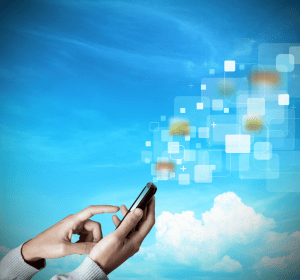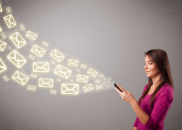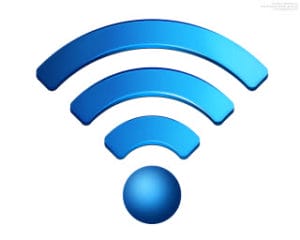Switch to Android?
 Switch to Android? A reader asks…
Switch to Android? A reader asks…
I’ve been using an iPhone for a few years now, and am about done. I am ready to switch to Android and am looking for tips on how to make an easy transition. Can you help?
While the iPhone is an excellent smartphone, we recognize that not everyone is happy and is perhaps thinking about or making the switch to an Android smartphone. Apple has a great guide for the reverse (going from Android to iPhone) here, and Google has their own guide for those moving from iPhone to Android here. I recommend that anyone switching use Google’s resource and I’m not going to rewrite it here. But I thought I’d point out a few issues to consider and/or deal with before and during the switch.
The first issue to consider is how ‘vested’ you are in the Apple ecosphere. Do you have a ton of apps on your current iPhone that you use daily? Then you might have to consider duplicating the functionality of those apps on your Android smartphone. Do you have a large music, tv show or movie library? Then you might have to consider the limitations or work of transferring your library over to Google. If you use iMessage on your iPhone, there’s a significant step you need to take before you switch over (see below). If you’re a photographer with a ton of high-definition photos on your iPhone/in iCloud, you need to understand how this will work with Google+ Photos feature. Certainly you want to get your email, contacts and calendar transferred over, and this depends on exactly what you’re using for those services. Getting everything transferred over from Apple’s ecosphere to Google’s may take a bit of work and will be a whole lot easier if you have a computer (PC or Mac) you can use to help you transfer over. Read on for more detail and tips.
 Let’s start with Apps. In general, you can find most any sort of app functionality on the Google Play Store that you can find in the Apple App Store. It’s been our experience that app developers put more spit-and-polish on their Apple versions than on their Android versions, but this is really something you’ll have to experience on an app-by-app basis. I would suggest you make a list of the apps that you use (you can skip the ones you have installed on your iPhone but never use), and then explore the Google Play Store for either the same developer’s app, or one that fits the same general functionality. If you get stuck looking for a specific app functionality, feel free to comment below and I’ll find you an Android-equivalent.
Let’s start with Apps. In general, you can find most any sort of app functionality on the Google Play Store that you can find in the Apple App Store. It’s been our experience that app developers put more spit-and-polish on their Apple versions than on their Android versions, but this is really something you’ll have to experience on an app-by-app basis. I would suggest you make a list of the apps that you use (you can skip the ones you have installed on your iPhone but never use), and then explore the Google Play Store for either the same developer’s app, or one that fits the same general functionality. If you get stuck looking for a specific app functionality, feel free to comment below and I’ll find you an Android-equivalent.
 Next is your music/media library. Google has a music manager app you can install on your PC that will allow you to import your music library direct from iTunes to the Music Manager. But there’s a 20,000 song limit (ostensibly before you have to pay), and doing this import doesn’t actually put the music onto your Android smartphone – it stores it in the cloud. Your Android phone can play that music, but you have to download each song to your smartphone before you can play the songs without a cell/wi-fi connection. This is similar to Apple’s music in iCloud – music streams to your smartphone over the internet. Be aware that streaming anything to your smartphone (unless on wi-fi) will chew up your monthly bandwidth allocation quickly.
Next is your music/media library. Google has a music manager app you can install on your PC that will allow you to import your music library direct from iTunes to the Music Manager. But there’s a 20,000 song limit (ostensibly before you have to pay), and doing this import doesn’t actually put the music onto your Android smartphone – it stores it in the cloud. Your Android phone can play that music, but you have to download each song to your smartphone before you can play the songs without a cell/wi-fi connection. This is similar to Apple’s music in iCloud – music streams to your smartphone over the internet. Be aware that streaming anything to your smartphone (unless on wi-fi) will chew up your monthly bandwidth allocation quickly.
If you don’t have a PC (just your old and new smartphone), it gets a little trickier to get your music from iPhone to Android.
TV shows and movies are a little trickier – if you purchased them from the iTunes Store, you will find that Digital Rights Management gets in the way of easily transferring them over. If you have an extensive library of TV/movie media, let me know in the comments and I can give you some tips – probably in a separate posting because it can be a little complicated.
 For text messaging, the only thing you have to make sure you do is turn off iMessage on your iPhone before you switchover to Android. Otherwise, messages will continue to be delivered to your iPhone via iCloud instead of through standard SMS texting. Do not neglect this!
For text messaging, the only thing you have to make sure you do is turn off iMessage on your iPhone before you switchover to Android. Otherwise, messages will continue to be delivered to your iPhone via iCloud instead of through standard SMS texting. Do not neglect this!
Photos is perhaps the easiest of the bunch – the Google+ app on your iPhone with auto-backup turned on will get everything into your Google+ Photos. And photos at or smaller than 2047×2048 pixels won’t even count against your Google+ 15gb storage limit. If you’ve got a lot of personal or non-commercial videos also on your iPhone, those will transfer over too – and won’t count against your 15gb limit as long as they are less than 15 minutes long.
One thing you definitely want to do while doing all this transferring and importing and copying: be on a solid wi-fi network. Don’t try this at a Starbucks or other public wi-fi. Don’t worry about a wired connection to a computer or trying to connect the smartphones together, Wi-fi works just fine.
 Lastly, your email, contacts and calendar. If you use Gmail already, no worries. Same for any other webmail or hosted Exchange service. Just setup your account on the new Android smartphone and let it sync away with your service. But if you still use an old-style POP email account (Verizon users and others!), you’re going to have to work at getting everything from the old to the new. I highly recommend you switch to a newer service using either iMAP or MS Exchange protocols. Gmail, Outlook.com, iCloud.com are all great alternatives. A quick note about one Gmail difference: most email services let you create folders to file messages while Gmail uses labels instead of folders. With folders, an email can only be in one folder at a time. With labels, an email can have many labels. Labels are like tags, clicking on one filters your entire list of emails to just that one label. I find it much better than folders.
Lastly, your email, contacts and calendar. If you use Gmail already, no worries. Same for any other webmail or hosted Exchange service. Just setup your account on the new Android smartphone and let it sync away with your service. But if you still use an old-style POP email account (Verizon users and others!), you’re going to have to work at getting everything from the old to the new. I highly recommend you switch to a newer service using either iMAP or MS Exchange protocols. Gmail, Outlook.com, iCloud.com are all great alternatives. A quick note about one Gmail difference: most email services let you create folders to file messages while Gmail uses labels instead of folders. With folders, an email can only be in one folder at a time. With labels, an email can have many labels. Labels are like tags, clicking on one filters your entire list of emails to just that one label. I find it much better than folders.
For email, you are probably going to use your existing service and email address, or use Gmail. Trust me, if you use an Android smartphone, using Gmail makes life a lot easier. If you use an older email service provider (aka POP mail), then you can use the import feature in Gmail on any computer – that gets your mail and contacts. For contacts on the iPhone, we have a great instruction on how to get them from iPhone to Gmail here, or you can follow the instructions from the Google guide.
Calendar in Outlook? use Tech-Recipe’s great instruction to export and import that into Google Calendars. If your calendar is only on your iPhone, we’ve found Android Authority’s guide to be great.
If you’ve got something else on your iPhone you’d like help getting transferred over, just leave a comment and I’ll get you the answer you need. Again, I’m not trying to duplicate the excellent online guides from Google, Tech-Recipe and AndroidAuthority, I’m focused on just helping you through the rough patches. Switching from one ecosystem to another isn’t a trivial pursuit, and if you’re going to make that leap, be sure to budget plenty of time to get everything done.
This website runs on a patronage model. If you find my answers of value, please consider supporting me by sending any dollar amount via:
or by mailing a check/cash to PosiTek.net LLC 1934 Old Gallows Road, Suite 350, Tysons Corner VA 22182. I am not a non-profit, but your support helps me to continue delivering advice and consumer technology support to the public. Thanks!
 One thing you definitely want to do while doing all this transferring and importing and copying: be on a solid wi-fi network. Don’t try this at a Starbucks or other public wi-fi. Don’t worry about a wired connection to a computer or trying to connect the smartphones together, Wi-fi works just fine.
One thing you definitely want to do while doing all this transferring and importing and copying: be on a solid wi-fi network. Don’t try this at a Starbucks or other public wi-fi. Don’t worry about a wired connection to a computer or trying to connect the smartphones together, Wi-fi works just fine.





